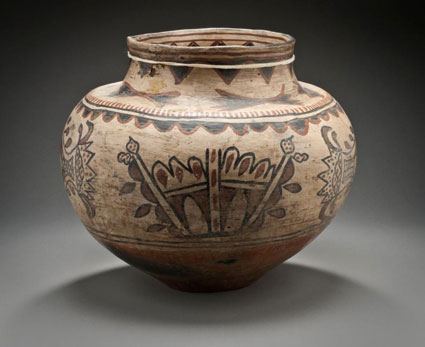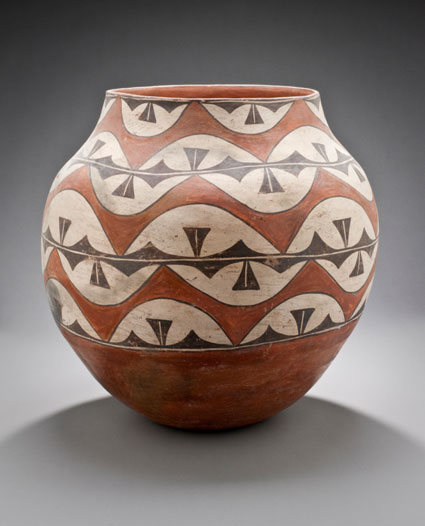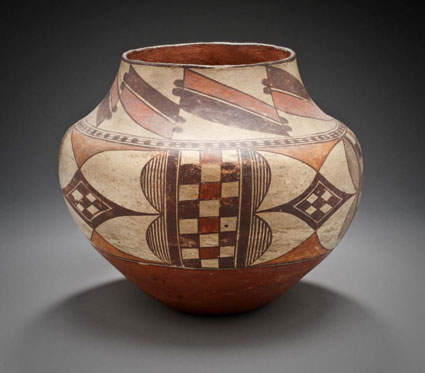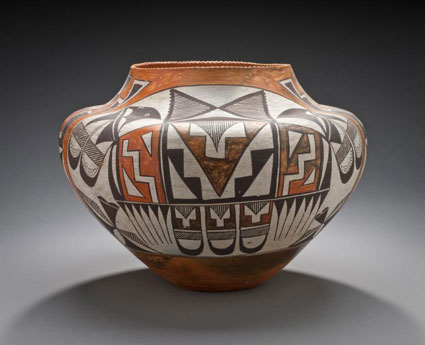When I found out that LACMA had been presented with seven rare examples of nineteenth-century Pueblo pottery, I was thrilled to realize that the scope of our historical American art collections was finally more comprehensive. Like many museums across the country, LACMA’s American art collection technically did not include works made by American Indians. Instead, it contained many works of art, especially from the nineteenth and early twentieth centuries, depicting American Indians generically and often stereotypically (with the important exception of our recently acquired portraits of Chippewa chief No-Tin).
The conventional notion was that American Indian art is not American art per se, the latter being traditionally understood as fine and decorative arts produced from the colonial era through the mid-twentieth century by formally trained, non-Native American artists. Recent exhibitions, such as The Modern West: American Landscapes, 1890–1915, and key museum installations at the Denver Art Museum, the Nelson-Atkins Museum of Art, and the Brooklyn Museum of Art, have tried to counter this convention to better present the two art histories—American Indian art and American art—as both independent and interdependent. And now, with the installation of Pueblo Pottery: 1800–1900, LACMA is able to do the same, if on a much more modest scale.

M2008_113_1compressed425- Zuni Pueblo, Kiapkwa, Polychrome Water Jar, circa 1840-1850, gift of Camilla Chandler Frost

M2008_113_2compressed425- Acomita Pueblo or possibly Laguna Pueblo, Water Jar, circa 1800-1820, gift of Camilla Chandler Frost

M2008_113_3compressed425- Tesuque (Tatungue) Pueblo, Water Jar, circa 1880-1890, gift of Camilla Chandler Frost

M2008_113_4compressed425- Zia Pueblo, Storage Jar, circa 1900, gift of Camilla Chandler Frost

M2008_113_5compressed425- Nampeyo, Bowl, circa 1900, gift of Camilla Chandler Frost

Acoma Pueblo, McCarty's Village, Jar, circa 1870-1880, gift of Camilla Chandler Frost

Acoma Pueblo, Jar, circa 1910, gift of Camilla Chandler Frost
Ultimately, these ceramics will be installed permanently in the American art galleries and may help us continue to shape an American art collection that includes more images and objects of—and by—American Indians.



